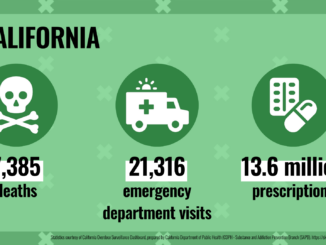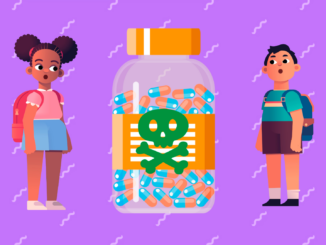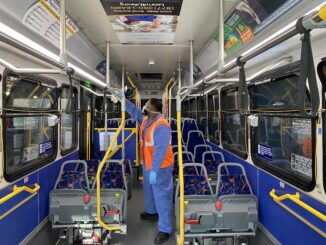
Safe disposal drug take-back bins help keep communities safe and clean
by Anne Stokes
Safe disposal drug take-back bins prevent unwanted medications from being misused and keeps them from polluting the environment. We talked to Anthony Hill, programs director with the Sierra Community Medical Foundation, to understand how bins keep communities healthy.
“Essentially, it’s a safety matter. It’s also an environmental cleanliness matter and a crime-prevention matter.”
Anthony Hill, Programs director, Sierra Community Medical Foundation
How do medication take-back bins benefit the communities they’re in?
Essentially, it’s a safety matter. It’s also an environmental cleanliness matter and a crime-prevention matter because it’s keeping people from having to dispose of medications in places it should not go.
The bins are needed so that people who have these medications have a safe waste disposal environment that’s managed properly. If not, then you’re dealing with pills and syringes being thrown away in normal garbage, which is unsafe for people.
You also have the need for these waste disposal bins in communities who would otherwise have no place to put their syringes and medications, which could get into the wrong hands of people who could utilize those items illegally.
Before the bins were available, the only methods people had of disposing unwanted medications was flushing it down the drain or throwing it in the trash. What environmental hazards does that pose?
If you just flush it down the toilet, [that causes] a lot of issues. Some of the medications when it goes into waste streams or into our river systems, … it’s polluting those areas.
Environmentally, there’s a multitude of challenges and problems when you don’t dispose of medications and needles in [appropriate] places. When you have needles on the street, when you have pills on the street, who knows whose hands those pills and syringes can get into? … Now we’re talking about other environmental protection issues that could cost the county or the state funds to keep areas clean. There’s a major need environmentally to have these bins in place in every community.
What types of materials can and cannot be accepted at take-back bins?
At each site, they are mandated to post and inform the public about what products can or cannot go into the waste bins. Some bins are not designed to have needles, therefore you cannot place needles in those bins. If needles or other types of supplies go in a bin that’s only used for prescription medication pills, now you’re mixing those products and that’s unsafe and it may not make it to the waste site.
Not just any retail business can host a take-back bin. Typically, appropriate sites include pharmacies, hospitals, and law enforcement locations, correct?
Those are the three general sites … that we’ve found that work.
Is there any support hosting sites can get?
Sites can contact Drug Takeback Solutions Foundation and MED-Project.
To find a bin near you, go to medtakebackcalifornia.org.
Read more stories about med bins in California’s Rural Mountains.
Brought to you by the California Drug Take-Back Program and the California Product Stewardship Council.
Recent facebook posts from California Product Stewardship Council

The California Product Stewardship Council (CPSC) is a powerful network of local governments, non-government organizations, businesses, and individuals supporting policies and projects where producers share in the responsibility for managing problem products at their end of life.
CPSC is California’s thought leader and expert on Product Stewardship and the Extended Producer Responsibility (EPR) movement.
EPR enjoys the support of more than 26 million Californians. That’s nearly 70% of the state's population! Nearly 150 resolutions have been passed by California local jurisdictions and organizations supporting a more sustainable and toxic free environment through product stewardship. CPSC works closely with companies who have redesigned products for reuse as well as those who have established pilot or permanent collection programs with some sharing of costs with others in the product chain.
California Product Stewardship Council



